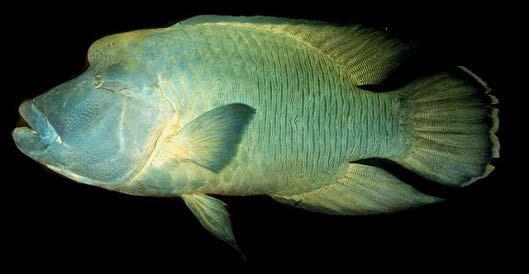William Kanyange
To describe spatial-temporal status of humphead wrasse stock in Kenya, determine level of exploitation and carry out awareness among various marine stakeholders.

The endangered humphead wrasee fish.
The project takes place on the Kenyan coast and focuses on a single species, the humphead wrasse (Cheilinus undulatus). Little has been done on humphead wrasse in the Western Indian Ocean Region (WIO) despite its declaration as endangered and vulnerable by CITES and IUCN. The fish grows to over 2 m and 190 kg and constitutes the biggest of reef fishes. Sizes of about 1 m have been rapidly recorded in Kenyan marine protected areas and 7 to 30 cm in unprotected areas. However, the status and exploitation levels of this species are not well known in the region, calling for urgent attention to generate useful information necessary for its management and protection.
This project will first look at the current level of exploitation using catch data and verify densities using underwater visual surveys, and geo-reference the fishing areas. A long term monitoring program will be launched once key humphead sites have been accurately identified. The project will be participatory, involving both the fishers and divers. Divers are an important source of information as they access marine parks and deeper inner reefs inaccessible to fishers. Feedback and awareness activities will be carried out and will involve a wider audience of marine resource users. Various methods will be used for the awareness activities, including posters, forums and distribution of t-shirts to relevant groups with appropriate messages.
Detailed background information generated will be useful in supporting the CITES and IUCN listing, as the current trend already indicates rarity of the species from catch data alone. Increased awareness among the marine users is expected, especially the fishermen who target the fish for food. The fish draws a lot of attention to divers thus they will benefit directly from conservation efforts.